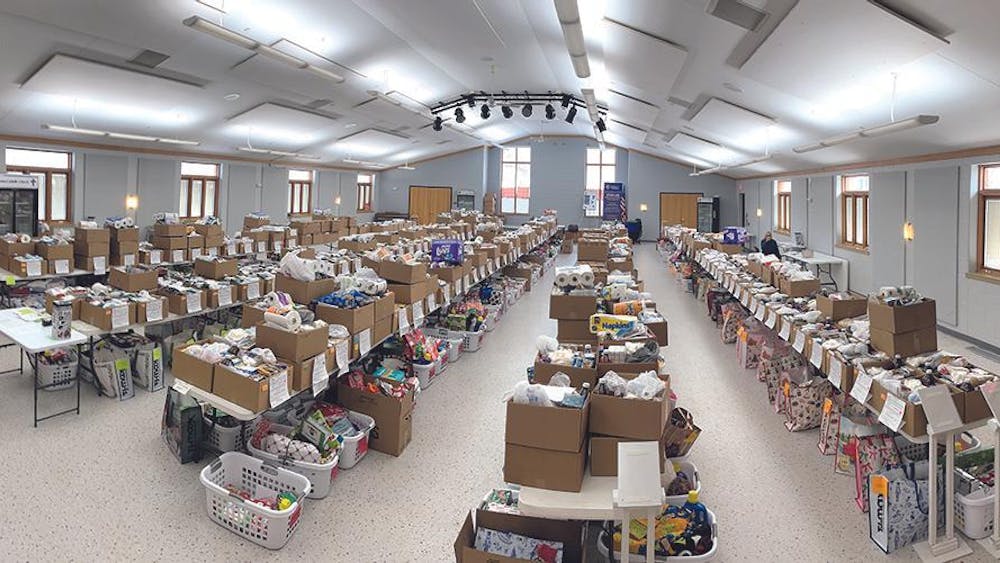The Chemours Environmental Impact Committee (CEIC), a group of area residents that formed in 2018 to promote and advance the cleanup of the former DuPont site, will provide a public update on the cleanup’s progress Jan. 11 leading into a Jan. 25 informational meeting that will include a presentation by the Hazardous Waste Section of the Michigan Department of Environment, Great Lakes, and Energy (EGLE).
Both meetings are scheduled to take place at the White River Township Hall on Post Road in Montague; the Jan. 11 meeting is slated for 7 p.m. with the Jan. 25 public update starting at 5:30 p.m.
The Jan. 11 meeting will provide residents with a history of the property’s contamination, CEIC’s goals for the cleanup, restoration, and conservation of the site, and – after 62 years of study and negotiations – why all of this is still on the table and not resolved. For those who are interested in the land’s cleanup and future, but can’t attend the Jan. 11 meeting in person, a Zoom link will be available by emailing makeitrightchemours@gmail.com or visiting Make It Right Chemours on Facebook.
Because “Community Acceptance” is one of the determining factors for reaching decisions about the DuPont site, which produced acetylene, neoprene, other polymers, and Freon during its 41 years of operations, CEIC is hoping for a strong turnout at the Township Hall for the Jan. 25 meeting.
According to local accounts and CEIC research, by 1961 taste/odor problems had impacted a nearby private well and studies confirmed groundwater contamination – originating from unlined landfills, sludge pits and spills in the manufacturing area – reaching White Lake.
Two miles to the west, spillage caused by a 1965 break in another sludge-pit wall poured down a hill toward Pierson Creek. Two years later, a diverted wastewater flow into the creek resulted in a huge fish kill in Sadony Bayou whose waters meander about a mile into White Lake. CEIC’s efforts have recently resulted in a $36,700 state grant to evaluate the bayou as an initial step for its restoration.
Over the past six decades since groundwater contamination was discovered at the DuPont site, the names of state agencies have changed. Property ownership has changed from DuPont to Chemours. State laws that govern hazardous waste have changed. What hasn’t changed is the situation at the DuPont/Chemours site.
In addition to annual sampling reports, major DuPont/Chemours investigation reports and work plans to inform decisions on interim measures and final cleanup plans have been submitted to state agencies for review in 1991, 2006, 2007, 2014, 2018 and 2021.
Some initiatives have been in place, including pumping and treating a large portion of the contaminated groundwater to remove chemicals. Meanwhile, unlined landfills with contaminants have remained in place, and in some locations groundwater contamination still exists without treatment – while we await more testing, more reports, and more negotiations.
While groundwater contamination might not be visible to the naked eye, what is in plain sight are the hills of lime just south of the former plant. A byproduct of one of the chemical processes at the site, the piles of lime have been stockpiled to such an extent that from the air they look like the lunar landscape. The accumulation has impacted and invaded what has been known as Mirror Lake.
The most recent round of negotiations between Chemours and the state has been ongoing since 2015. The Jan. 25 meeting will be the latest update for the public.
CEIC’s goals for the acreage include:
* Removal of landfills and all sources of contamination.
* Testing of sediments in Pierson Creek and Sadony Bayou beyond the Chemours property boundaries.
* Cleanup and Restoration of Mirror Lake.
* Removal of the massive lime pile and restoration of the ravine underneath.
* Testing of soil beneath the former manufacturing plant and settling ponds.
* Ensuring there are no leaks in the pipeline to Lake Michigan. If there were leaks, testing the soil underneath.
* Cleanup of the property with no deed restrictions.
* Permanent conservation of portions of the property, including the White Lake shoreline parcel.
For more information, email makeitrightchemours@gmail.com or go to Make It Right Chemours on Facebook, or call Claire Schlaff at 231-670-2724.












